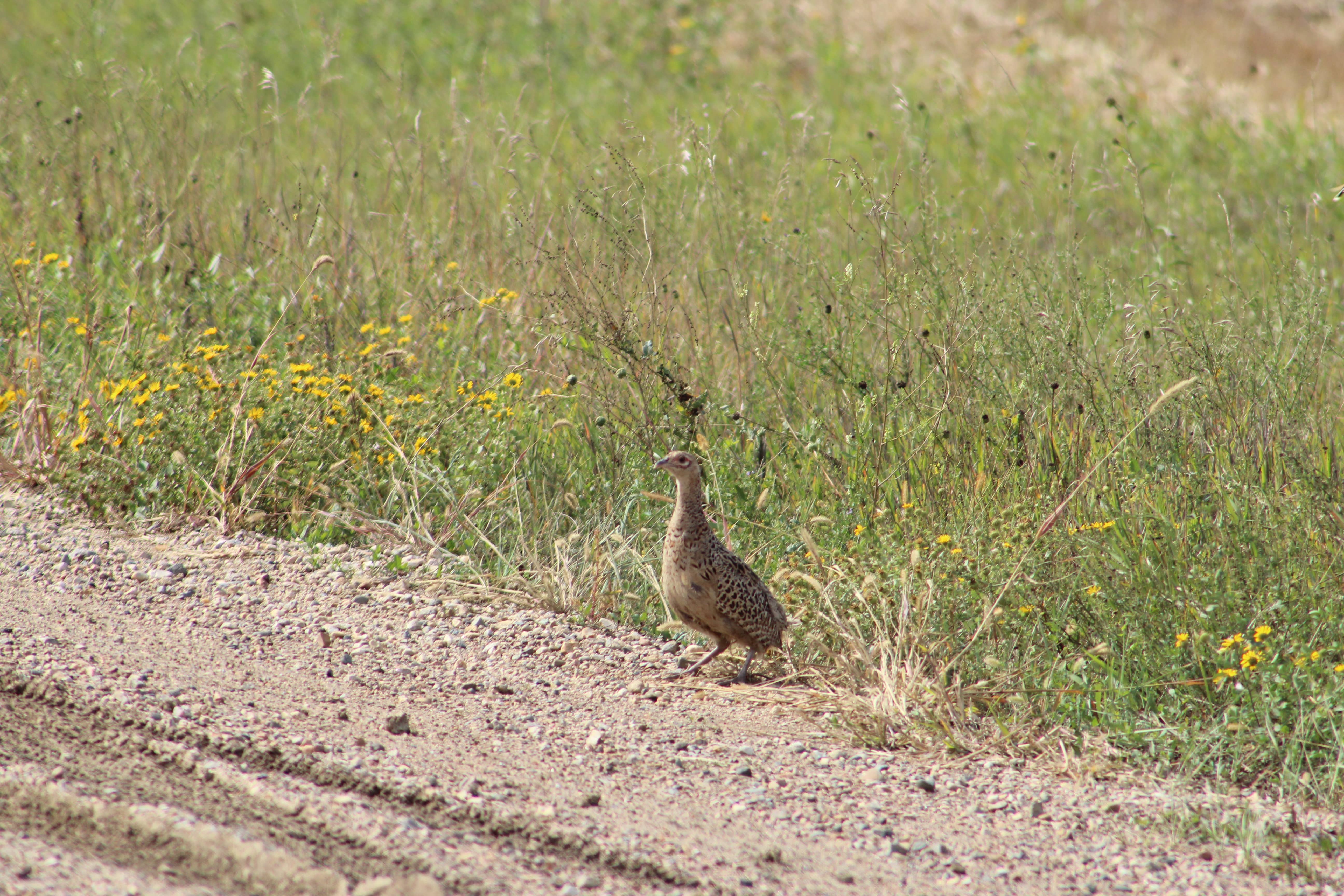
Why Oh Why? A young-of-the-year hen pheasant stands on the edge of lush grasses and forbs. In seasons with good rain and food production, pheasant recruitment tends to be stronger. Figuring out the factors that make hunting and fishing better comes down to examining the food web and the aspects of the environment that anchor each strand in place. Simonson Photo.
By Nick Simonson
As an elementary student I learned about the food chain. Little things get eaten by slightly bigger things, which get eaten by even bigger things, which ultimately get devoured in a bloody mess by sharks, lions, crocodiles or some other apex predator with sharp claws and gnashing teeth. As I got older, my understanding of that simple chain of predator-prey relationships became less of a straight line and more of a tangled web as biology courses and armchair interests in conservation exposed how from region-to-region and biome-to-biome, the networks of food species and predator species (the two often not mutually exclusive) were far more complicated and less cartoonish than that. Additionally, the requirements of each one of those strands in the web of life went simply beyond one creature devouring another in order to stay alive.
Water, habitat, vegetation, and other species-specific demands ranging from the type of soil in the ground to the substrate of a river section all became more important in understanding wildlife populations and how those big things come to eat little things, and then get bigger as a result. Admittedly, being an upland hunter, a focus on pheasants and how they go from chicks to huntable birds in the autumn has always been a baseline for my understanding of how things work in a small portion of that web. With the season wrapped up, it’s easy to take a look at last year’s hunting and that from the previous one as an example in how those micro-factors outside of the predator-prey relationship play into the process and develop the food web which sustains a population of flushing roosters each fall.
Pheasant chicks are dependent on a population of small invertebrates and insects in order to grow into their adult forms. In a good summer, chicks will hatch around the end of May in my neck of the prairie and begin chowing down on morsels like slugs, beetles and spiders tucked amidst the green stems of grasses, forbs, and other plants. That is true when ample rain has helped spur the growth of those plants, and in turn, the insect population around them. This fall, I along with many other hunters, were surprised to see strong populations of young-of-the-year roosters in our hunting efforts. In fact, I never shot a long-spurred bird at all. Those that made their way to my game pouch, whether by luck of the draw or simply because there were way more of them, were all young birds. In my mind, that was a good thing and evidence enough of a stronger than expected summer of recruitment under those good food-producing and pheasant brooding conditions.
Looking back further to the fall of 2021, following a summer-long drought which began in April and did not subside until long after the chick-rearing season had ended, it was easy to see the impact a lack of moisture had on the landscape. Habitat was dry and withered, and arid conditions hindered the production of pheasant chick food items like crickets and slugs. As a result, chicks were likely born in the dry conditions, but many did not find the food they needed to survive due to the limited quality of cover and the lack of moisture which impacted the recruitment of the small creatures they needed to grow and thrive. That fall, a much greater proportion of the birds in my bag were long-spurred roosters from the season before, and flushes were not as numerous because populations just weren’t as strong without the recruitment of new pheasants.
Inspecting that one strand of the food web, such as the bugs and slugs that pheasant chicks eat, certainly doesn’t provide the entire picture or set out the myriad factors that impact animal populations from year to year. But it does show at least an example of how habitat quality and timely weather are just two more micro-influencers on the system that powers predator-and-prey relationships. When other elements are inspected, such as a change in amounts of good habitat, and other similar factors, such as quality of browse for growing deer, or insect and minnow hatches for trout or walleyes are examined, a greater understanding comes to be.
As this winter settles in (the length and severity of which is an influencer on animal survival and the food web in its own right), look back on the results of your most recent favorite season and those from years past. What predator-prey relationships are notable, and what influences outside of the biological had impacts on them? Putting together the interconnected nature of things by examining each strand of the web we observe in our favorite pastimes on the water or in the field gives us a greater understanding of how things work in nature and it helps define exactly what our role should be in the promotion, protection and conservation of all those little things we can influence as the anchor points of the web that sustains good hunting and fishing…in our outdoors.
